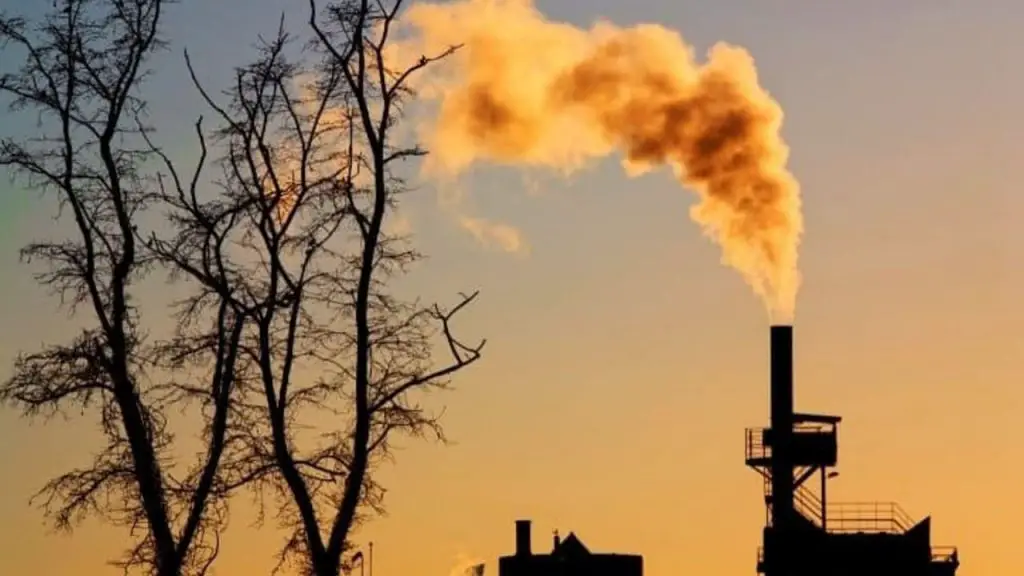Acid rain is formed when gaseous emissions from sources like power plants, factories, and automobiles react with moisture in the air. Those reactions produce nitric and sulfuric acids, which become dissolved in rainfall to create acid rain. Acid rain affects different locations around the world, but it’s primarily a problem in areas with heavy industrial activities.
Fossil-fuel combustion is a major contributor to the production of acidic compounds in the atmosphere as a result of CO2-emitting processes involved in their extraction, transport, and usage. Acid rain is a type of precipitation that has an abnormal pH level because of pollutants in the atmosphere. These acidic compounds can have devastating effects on natural ecosystems, especially delicate types such as the redwood forests of Northern California.
Does Burning Fossil Fuels Cause Acid Rain?

Fossil fuels are hydrocarbon-based fuels, such as coal, natural gas, and oil that have been extracted from the earth at high temperatures and pressures. The combustion of fossil fuels is the main source of sulfur dioxide, nitrous oxides, carbon dioxide, and other pollutants that cause acid rain. Pollutants in the atmosphere can react with water vapor, oxygen, and sodium to form acid rain.
Fossil fuels contain sulfur and nitrogen compounds that are released into the air when they are burned, producing sulfur dioxide (SO2) and nitrogen oxides (NOx), which are the main sources of acid rain. While fossil fuels are burned to generate electricity, other industries such as mining, refining, and processing fossil fuels, as well as metal and chemical industries emit sulfur dioxide and nitrogen oxides into the atmosphere.
How does Fossil Fuel Combustion Cause Acid Rain?
When fossil fuels are burned, a number of different chemical compounds are released into the atmosphere. The compounds that are most associated with fossil fuel combustion are sulfur dioxide, nitrogen oxides, and carbon dioxide. When these compounds are emitted into the atmosphere, they can come into contact with water and oxygen, which causes them to be transformed into sulfuric and nitric acids.
The acids are then deposited onto surfaces, including vegetation, lakes, and buildings. Wetlands are particularly at risk of experiencing acidification, as the high level of carbon dioxide in the atmosphere can be easily absorbed by water. As a result, the water becomes highly acidic.
Types of Fossil Fuels that Cause Acid Rain
- Coal: Burning coal produces large amounts of nitric oxide and sulfur dioxide. These chemicals react with water in the atmosphere to form nitric acid and sulfuric acid.
- Oil: When oil is burned, it produces large quantities of carbon dioxide, nitrous oxide, and sulfur dioxide. All these pollutants react with water in the atmosphere to form sulfuric acid and nitric acid.
- Natural Gas: Natural gas is mostly composed of methane. When it is burned, it produces carbon dioxide, nitrous oxides, and sulfur dioxide. These chemicals react with water in the atmosphere to form sulfuric acid and nitric acid.
- Nuclear Power: When nuclear power is generated, it produces small amounts of sulfur dioxide, nitrogen oxides, and carbon dioxide, which react with water in the atmosphere to form sulfuric acid and nitric acid.
Ecological Effects of Acid Rain
- Damage to Trees: Acid rain can damage trees and other plants by leaching nutrients from their leaves. This leaves them vulnerable to diseases and pests and can lead to the death of the plant.
- Changes in Soil Quality: The soil in the environment can also be damaged by acid rain. It can be leached of its nutrients and flora, leaving it unable to support healthy plant life.
- Corrosion on Buildings: Although structures like bridges and buildings may seem sturdy, they can be affected by acid rain as well. The water in the acid can corrode the structures, which can lead to structural collapses.
- Changes in Fish and Insect Populations: Some aquatic species depend on soil nutrients for survival. If these nutrients are leached away by acid rain, the population of these creatures can decline.
What Can be Done to Prevent Fossil Fuel-Based Acid Rain?
In order to reduce the amount of acid rain caused by the combustion of fossil fuels, governments around the world have implemented various policies. These include reducing air pollution at power plants, reducing automobile emissions, and creating programs to reduce the number of fossil fuels used.
Since governments began regulating pollution and fossil fuel combustion, the amount of acid rain in the United States has decreased by about 50%. While there is still more that can be done, these efforts have shown that real progress can be made.
Conclusion
Fossil fuel combustion is responsible for about one-third of the acid rain in the United States. The emissions of sulfur dioxide and nitrogen oxides from fossil fuel combustion during electricity generation are the main causes of acid rain.
Efforts to control acid rain are challenging because it is caused by a variety of pollutants and sources, and the process takes several days to occur.
Fossil fuels are burned to generate electricity. This generates emissions of sulfur dioxide, nitrogen oxides, and carbon dioxide, the major causes of acidification. Nitrogen oxides come primarily from automobile exhaust and fertilizers. These gases can be neutralized by chemicals in rainwater, especially carbon dioxide. Resulting in chemical reactions that produce acids that fall to the ground as acid rain.
Additional Contents
